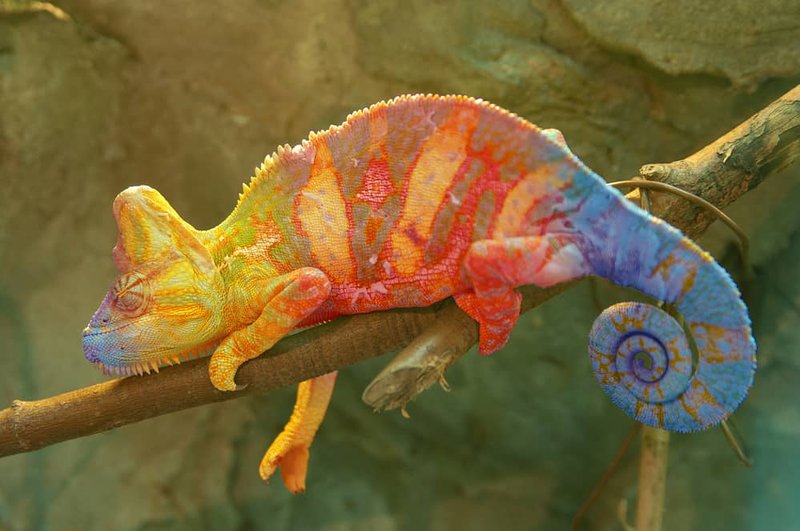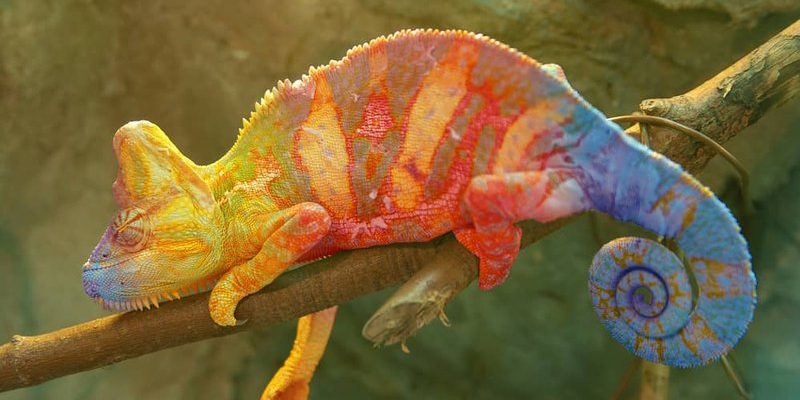
Understanding the Oustalet’s Chameleon
The Oustalet’s chameleon, or *Furcifer oustaleti*, is primarily found in Madagascar. This species is notable for its size, often reaching lengths of up to 24 inches, making it one of the largest chameleons in the world. They come in various colors, ranging from greens and browns to vibrant yellows and blues, which they use for communication and camouflage.
These chameleons have remarkable adaptations, like their long, prehensile tails that help them navigate their arboreal habitats. Their unique eyes can move independently, allowing them to spot potential threats or prey without moving their heads. While they might look like they have it all figured out, when it comes to regeneration, things get a bit complicated.
The Science of Regeneration in Chameleons
Regeneration in reptiles is a fascinating area of study. Many lizards can regrow their tails, and this ability serves a practical purpose: escaping predators. When a lizard loses its tail, it can often escape while the tail distracts the predator. However, the process is not as simple for all species.
Chameleons, including the Oustalet’s, have a different approach. Although they may lose their tails during fights or due to stress, they don’t possess the same regenerative powers as some other lizards. Instead, they rely on their agility, camouflage, and quickly adapting behaviors to avoid confrontations where tail loss might occur.
What Happens When an Oustalet’s Chameleon Loses Its Tail?
If an Oustalet’s chameleon loses its tail, it might seem like a significant loss, but it can still thrive. The detached tail will often serve as a distraction, enabling the chameleon to escape. Over time, the creature may adjust to its new condition and continue to hunt for food, climb trees, and navigate its environment.
However, without the ability to regenerate, the chameleon will have to rely on its other skills. They still have strong limbs and excellent gripping capabilities, which help them maintain balance while climbing. They’ve adapted their behaviors so that losing a tail isn’t the end of the world; it’s more like a minor setback.
Why Can’t The Oustalet’s Chameleon Regrow Its Limbs or Tail?
The limitations on regeneration for the Oustalet’s chameleon boil down to their biology. Unlike some lizards, which have complex systems for regrowing lost limbs or tails, chameleons evolved differently. Their energy is better spent on developing their camouflage skills, hunting strategies, and climbing abilities—all essential for survival in their native habitats.
It’s also worth noting that regeneration requires an immense amount of energy and biological resources. For chameleons, their focus has shifted toward other adaptations, such as their ability to change colors and blend into their surroundings. This skill not only protects them from predators but also helps them communicate with potential mates.
What Other Reptiles Can Regrow Their Tails or Limbs?
You might be curious about which reptiles can regenerate their tails or limbs. Several species of lizards exhibit this impressive ability. Here’s a quick breakdown:
- Green Anole: Known for its vibrant colors, this lizard can regrow its tail multiple times.
- Blue-Tongued Skink: Although its tail can be lost, regeneration takes significant time and energy.
- Geckos: These speedy creatures often lose their tails as a defense mechanism and can regrow them as well.
While many of these lizards exhibit remarkable regenerative capabilities, each species has evolved different strategies for survival. This highlights the diversity of adaptations in the reptile world.
Implications for Conservation and Care
Understanding the Oustalet’s chameleon’s limitations helps in conservation efforts. Educating pet owners and enthusiasts about their care and biology is crucial for preserving their natural habitats. Many Oustalet’s chameleons are kept as pets, and it’s essential for owners to know that these creatures won’t regrow lost tails, which can affect their well-being.
When caring for these lizards, it’s vital to create an environment that mimics their natural habitat. Providing ample space to climb and hide, along with a varied diet of insects, can support their health. Furthermore, educating people about the intricacies of chameleon biology fosters a deeper appreciation for these remarkable creatures.
So, can the Oustalet’s chameleon regrow its tail or limbs? The simple answer is no. While they might not have the regenerative abilities found in some of their lizard relatives, these fascinating creatures have adapted in other ways to thrive in their environments.
From their stunning coloration to their impressive camouflage skills, the Oustalet’s chameleon has plenty of tricks up its sleeve. As we learn more about these remarkable reptiles, it becomes even clearer that each species contributes to the rich tapestry of life on our planet, showing us just how diverse and resilient nature can be.

